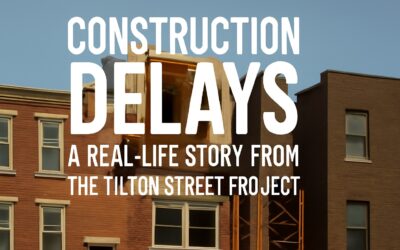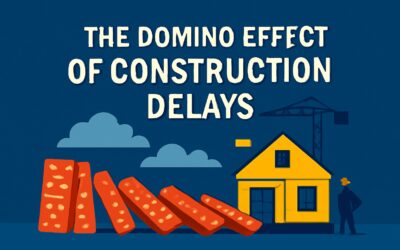Finalized Permit Vs. Certificate of Occupancy. Today, we explain the differences between Finalizing a Permit and getting a Certificate of Occupancy (CO).
You’ve probably encountered a wealth of information online about the various types of 203(k) loans, their processes, and requirements, but not as much about closing a 203(k) project.
If you’ve ever been through a 203(k) renovation project, you know what I’m talking about. And if you’re planning to do one, guess what? This article will save you from a lot of confusion in the future.
Let’s explore the finalized permit vs. certificate of occupancy.
Closing a 203(k) Project
First, let’s quickly review the 203(k) process. A 203(k) loan, backed by the Federal Housing Administration (FHA), is designed to provide financing for rehabilitating or improving properties that do not meet standard lending criteria. These loans are commonly used for fixer-upper properties or projects requiring significant renovations to bring the property up to livable standards.
When you use a 203(k) loan to fix up a house, lenders disburse funds from a 203(k) loan in multiple draws or stages throughout the renovation process. These draws are usually contingent upon the completion of specific milestones or phases of the project, as outlined in the loan agreement. But before they release the final payment, they must ensure the job is complete.
How do they do that? Well, most 203(k) projects require permits from the city. When the city inspector passes all permit inspections at the end of the project, the lender knows the work is done correctly and can release the final payment.
However, sometimes, more than just finalizing the permits is needed. You might also need a Certificate of Occupancy from the city to officially close the 203(k) project.
What is the difference between finalizing a permit and getting a Certificate of Occupancy? Keep reading to find out!
Why Do You Need Permits for 203(k) Renovations?
Let’s start with the basics. Why do you need a permit in the first place?
Permits are official approval from the city to undertake construction, renovation, or alteration work on a property. They assure the lender and the borrower that the project is completed correctly and per legal requirements.
203(k) lenders require permits to ensure that the renovations or construction financed with the loan comply with local building codes and regulations. Permits help protect the lender’s investment by ensuring the property meets safety and quality standards.
Getting permits ensures licensed professionals do the work and local authorities inspect that work, reducing future safety and repair risks.
What is a Certificate of Occupancy and When Do You Need One in Philadelphia?
Now, what exactly is a Certificate of Occupancy? Often abbreviated as CO, it is a document issued by the city. A CO certifies that a building or a specific portion of it complies with all applicable codes and is safe for occupancy.
It typically signifies that construction or renovation work has been completed according to approved plans and meets all necessary habitation or commercial use standards.
Important Note: The city doesn’t always ask for a Certificate of Occupancy (CO) for every type of renovation.
According to the L&I (Department of Licenses and Inspections),
You need a CO for:
- New buildings.
- Additions.
- Changes altering exits or fire ratings.
- Projects that change the occupancy of the building
You don’t need a CO for:
- Existing one- and two-family dwellings.
- Although the number of people living there has changed, the building is still used similarly.
Sometimes, when you finish specific Building Permit jobs, you get a CO. Even if specific tasks are incomplete, an inspector may issue a Certificate of Occupancy if the building is deemed habitable.
Note: You don’t have to complete extra paperwork or pay more if you get a CO with your Building Permit.
Temporary Certificate of Occupancy
L&I can issue Temporary COs or Conditional COs. Some townships call this Use and Occupancy. Use and Occupancy means the inspector says the building is primarily okay but has yet to be perfect.
A Temporary Certificate of Occupancy lets the owner take charge of the property and start any necessary work, like setting up common areas, moving items in, and showing spaces to potential tenants. They can also conditionally move tenants in.
It also means the contractor has finished their work, and the lender may accept to disburse the final draw amount.
A Temporary CO indicates that a building is safe to occupy. In contrast, a Permanent CO indicates all work is complete and the building is in compliance with all codes and regulations.
Finalized Permit Vs. Certificate of Occupancy
Finalizing a permit and getting a Certificate of Occupancy (CO) are distinct steps in the process of 203(k) renovation projects, each serving a specific purpose and carrying its own set of requirements.
Permit Finalization
Finalizing a permit means the city has reviewed your project and confirmed the completed work aligns with the approved plans and building codes. It’s like a thumbs-up on the construction itself.
After all the renovation work is complete and all inspections passed, the permit is closed out or finalized. This step officially acknowledges that the project has complied with the approved plans and regulations.
It doesn’t necessarily mean the project is complete or ready for occupancy, and it doesn’t guarantee that the actual building is finished or safe to live in.
Certificate of Occupancy (CO)
Issuing a Certificate of Occupancy (CO) is the city’s final approval stamp. It signifies that a completed construction or renovation project meets all safety and code requirements, making it legal and safe for occupancy. You can legally use the space for its intended purpose (e.g., live in the renovated house or open a business in the commercial space).
In summary, finalizing a permit is about approving the construction itself. Issuing a CO is about approving the completed project as safe and legal for occupancy.
Let’s consider the below scenario where a 203(k) project needs a Certificate of Occupancy after finalizing permits.
Will the City Finalize a Permit without Issuing a Certificate of Occupancy in Philadelphia?
The short answer is yes, but it could be more complex. Finalizing a permit and getting a Certificate of Occupancy are two distinct steps in the construction process, each with its requirements and implications.
Consider this scenario: You’re renovating a mixed-use building in Philadelphia. You’ve completed the residential portion of the project and are ready to close out the permit for that part. However, on the commercial side, an expert must test the fire panel before issuing a Certificate of Occupancy. In this case, while you may be able to finalize the permit for the residential portion, obtaining a CO for the commercial space is still pending until the fire panel testing is completed and approved.
Will the 203(k) Lender Pay the Final Draw without a Certificate of Occupancy?
The lender usually asks for the finalized permit, but it depends on the lender.
Whether the lender disburses the final draw of funds without a Certificate of Occupancy (CO) largely depends on the specific lender’s policies and the circumstances of the project.
Lenders often require a Certificate of Occupancy before disbursing the final draw of funds. This requirement is necessary because the issuance of a CO confirms that the property has been renovated to meet the standards set by local authorities and is safe for occupation.
However, some lenders may agree to disburse the remaining funds with only a finalized permit. These situations are considered on a case-by-case basis.
Conclusion
Completing a 203(k) project is straightforward once you understand the rules. You need to know the distinction between the finalized permit vs. Certificate of Occupancy to avoid wasting time and facing complications.
If your project doesn’t require a Certificate of Occupancy as per L&I guidelines, finalize the permits, and you’re finished. However, if needed, consult your lender about accepting a finalized permit for payment, which will speed up the process. If that’s not an option, consider a temporary CO. But if your lender insists on a Certificate of Occupancy, you must get one.
At Matrix, we have extensive experience with 203(k) projects, guiding clients from start to finish. If you need a 203(k) contractor in Philadelphia or New Jersey, don’t hesitate to contact us for a FREE Consultation and Estimate.
Feel free to share this article with anyone navigating the closure of a 203(k) project (Finalized Permit Vs. Certificate of Occupancy)!
FAQs
1. Who is Responsible for Issuing a Certificate of Occupancy?
In Philadelphia, the Department of Licenses and Inspections (L&I) is responsible for issuing Certificates of Occupancy (COs).
2. Does a certificate of occupancy have an expiration date?
No, Certificates of Occupancy do not have an expiration date. Building owners or tenants can request copies of previously issued COs if needed.
3. How Much Does it Cost to Get a Certificate of Occupancy in Philadelphia?
Different fees may apply.
- Filing fee
$100, Non-refundable and is applied towards the final permit fee
- Permit fee
$232 per building or space that requires its own Certificate of Occupancy
- Surcharge fees
City surcharge: $3 per permit
State surcharge: $4.50 per permit
- Record retention fee
$4 per page larger than 8.5 in. x 14 in.
4. How Long Does it Take to Get a Certificate of Occupancy in Philadelphia?
The processing time for CO applications typically takes 20 business days.




![Top 20 Reasons for Failing a Plumbing Inspection in Philadelphia [2025 Guide]](https://matrixgc.com/wp-content/uploads/2025/05/Common-issues-causing-failing-a-plumbing-inspection-in-Philadelphia.png)




0 Comments